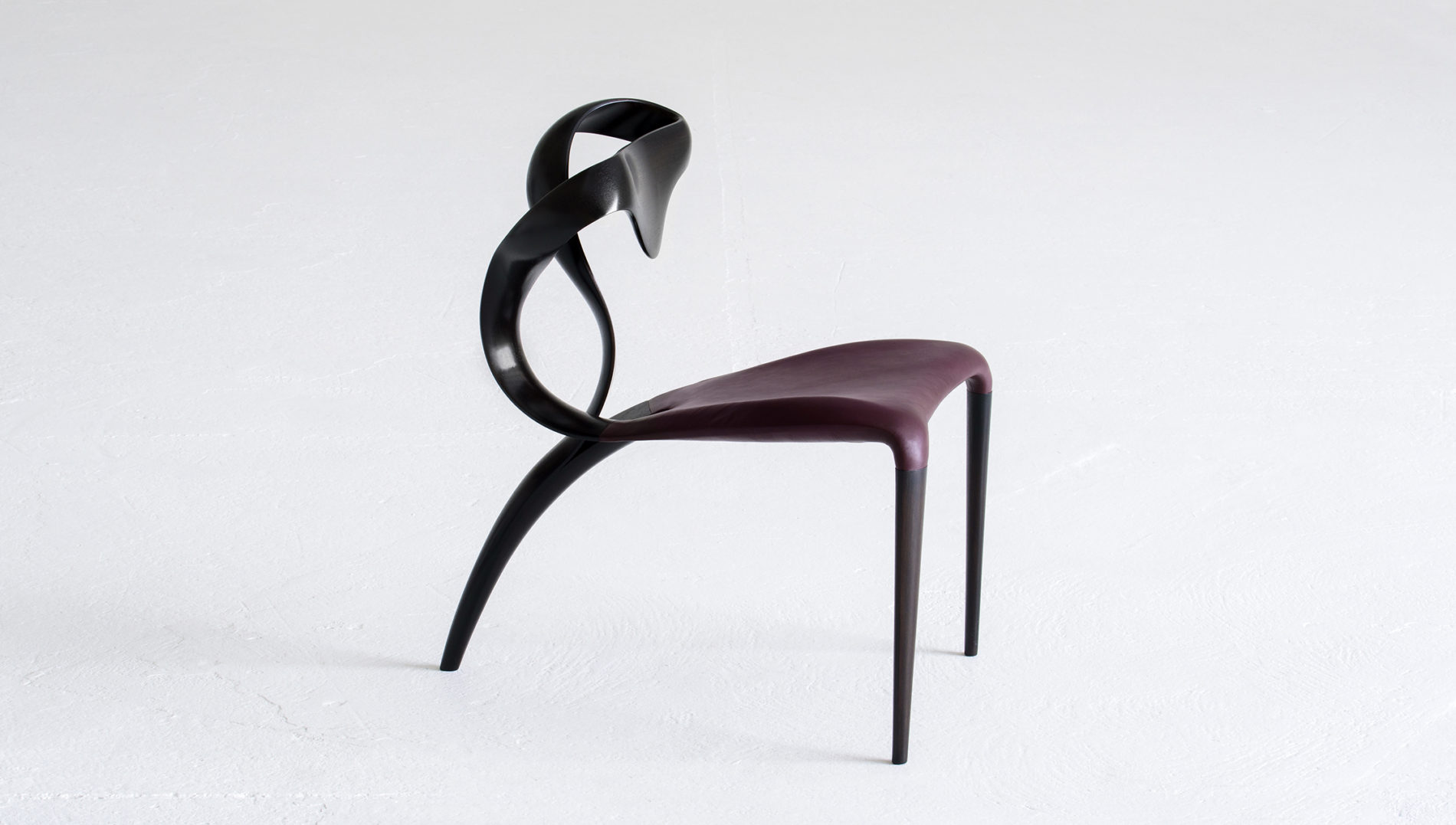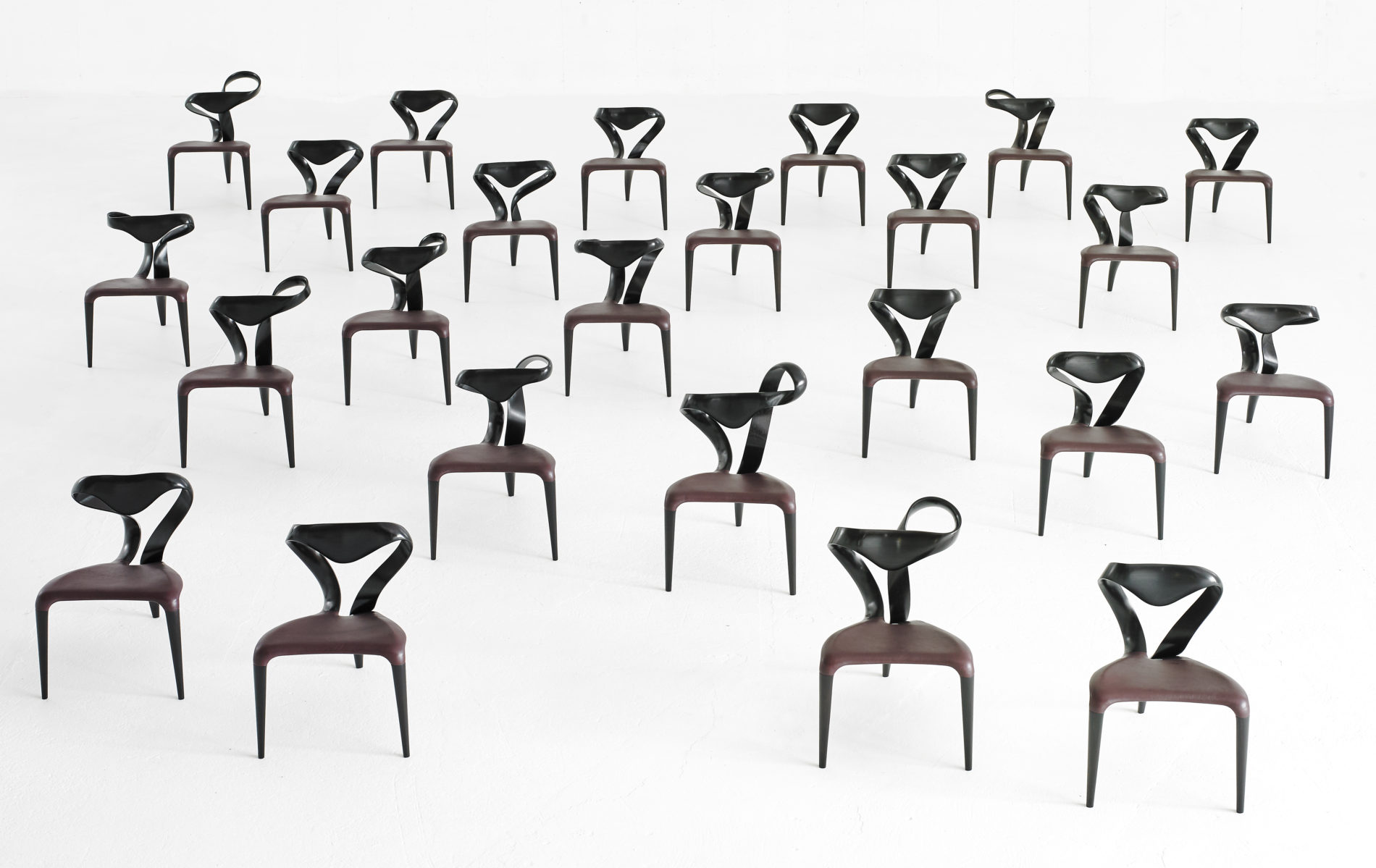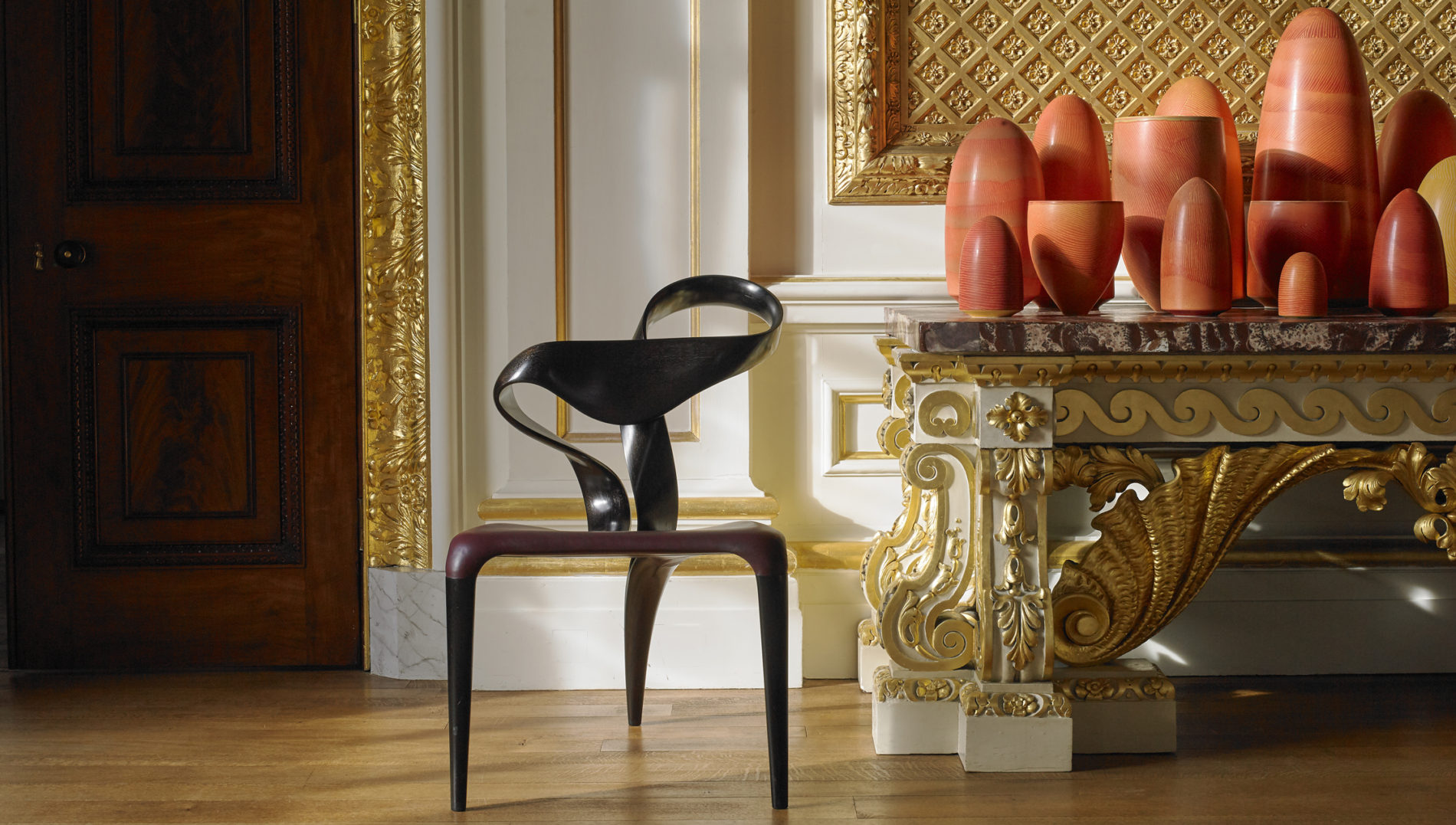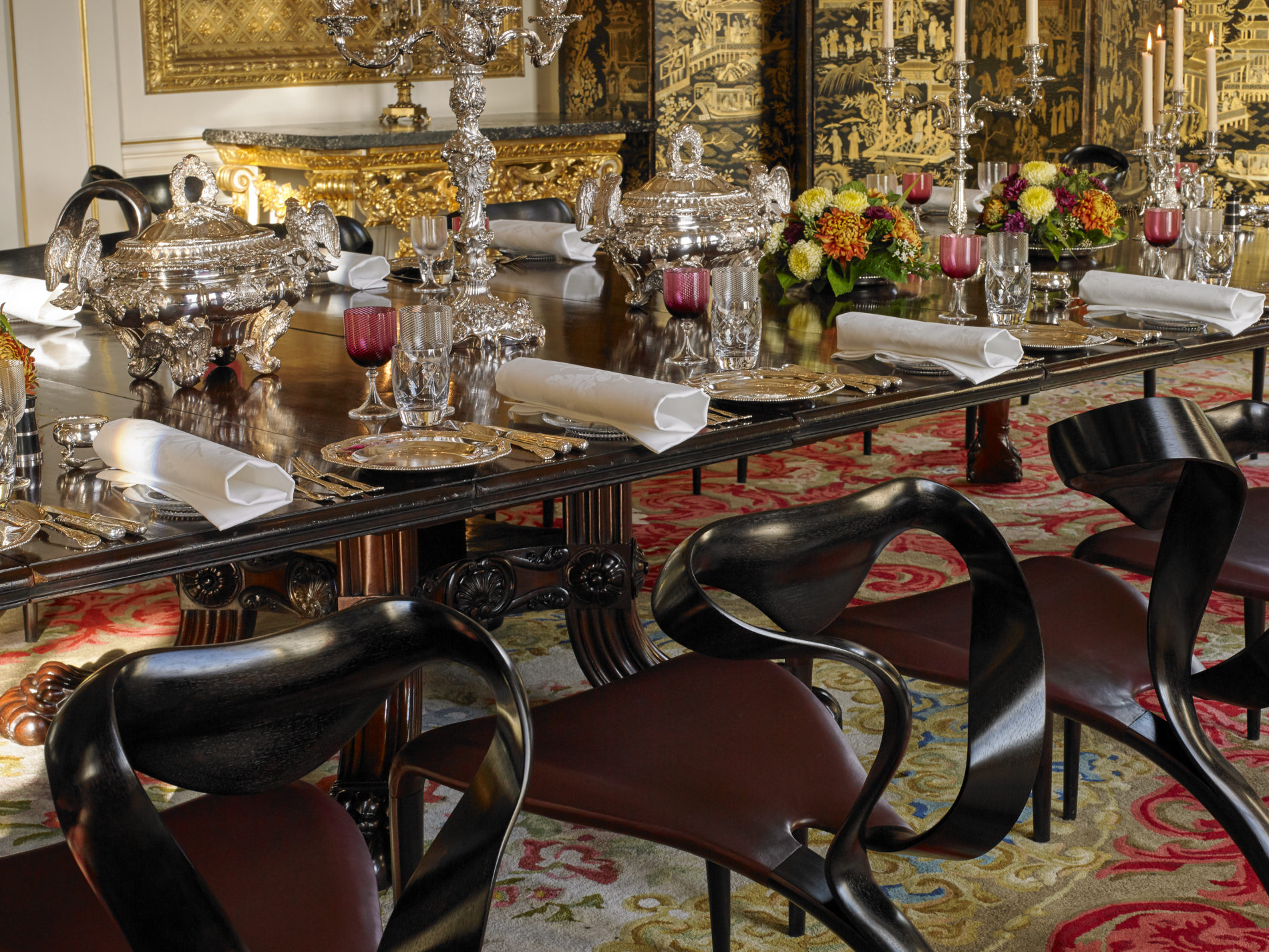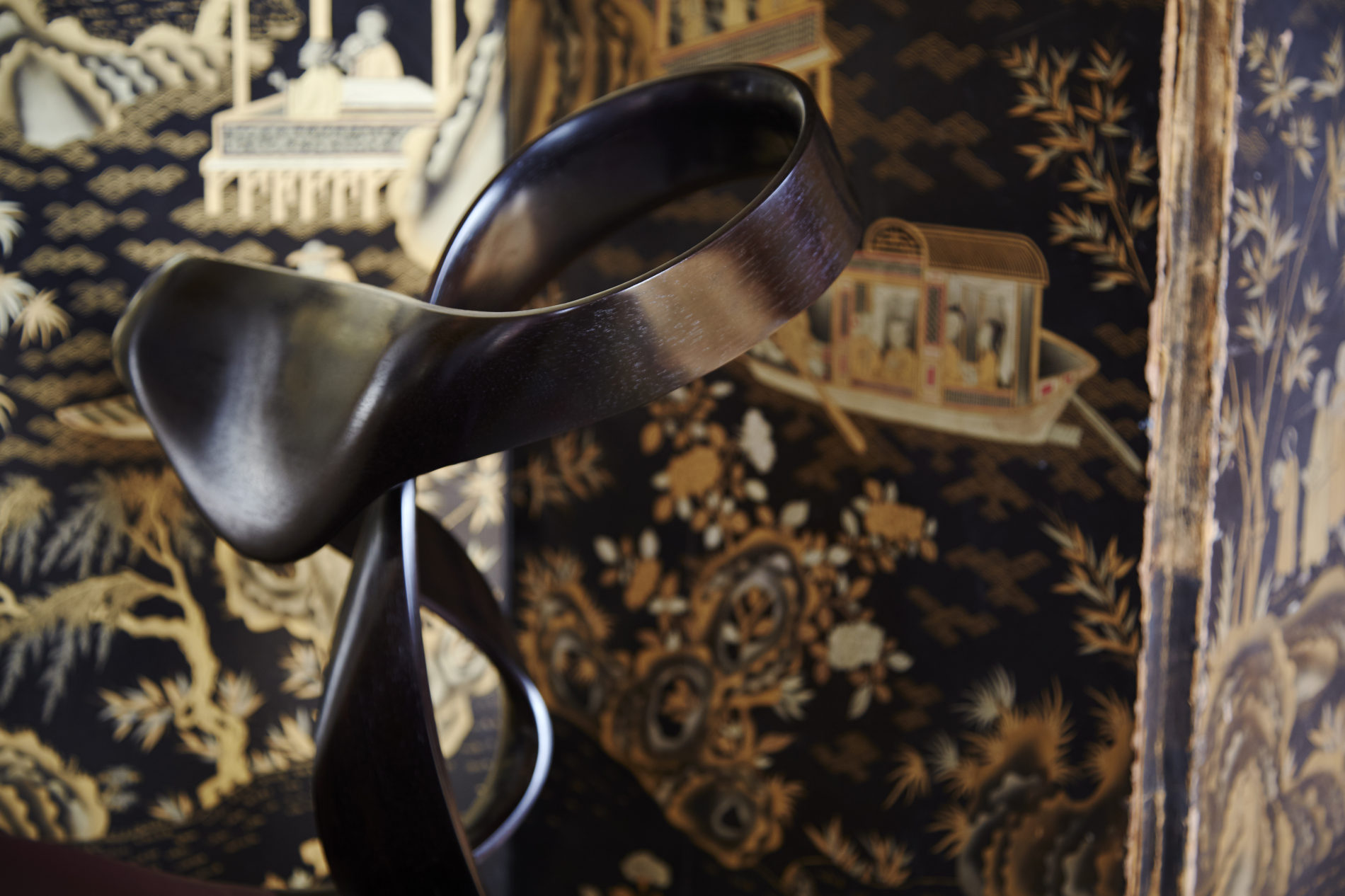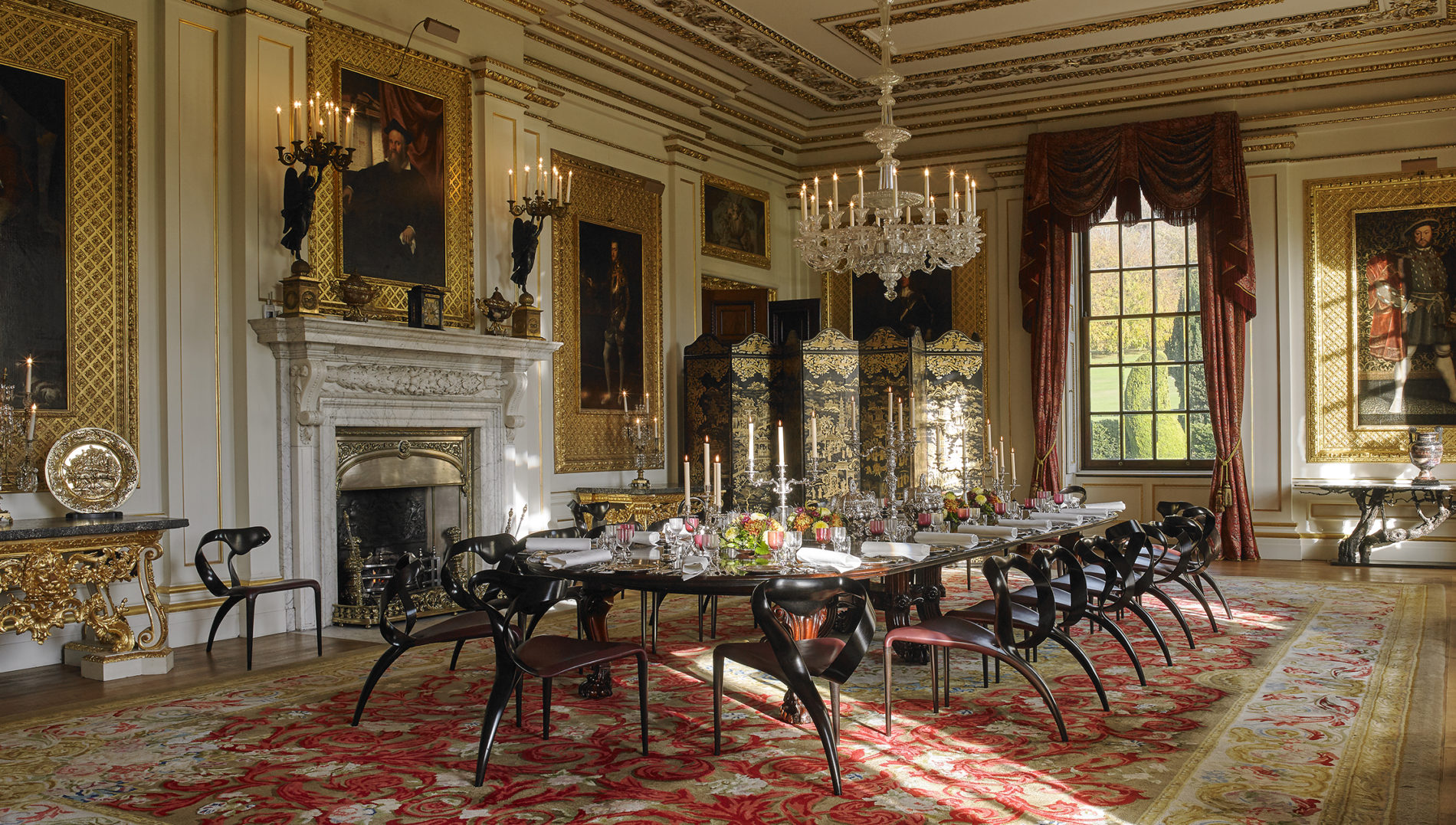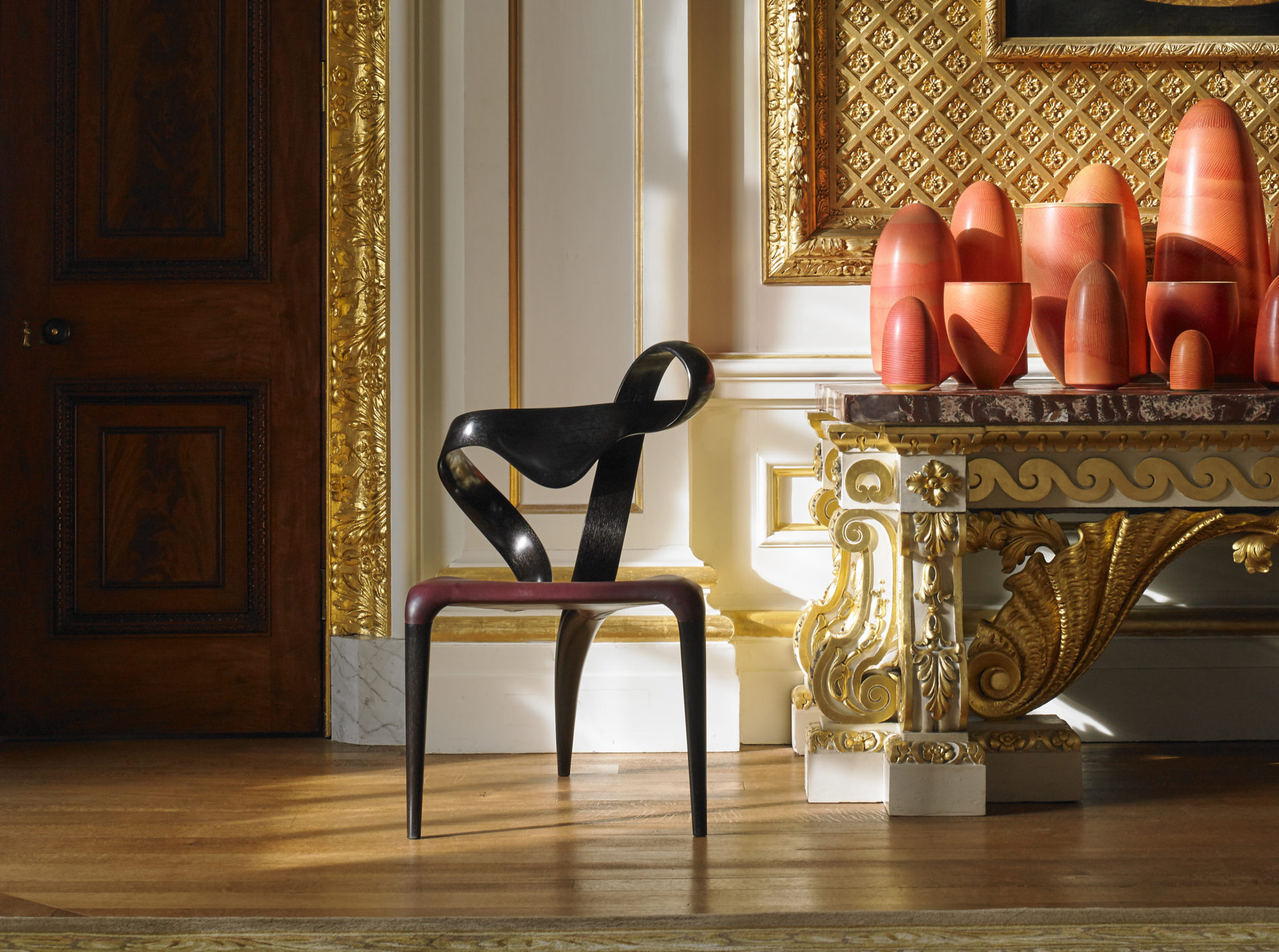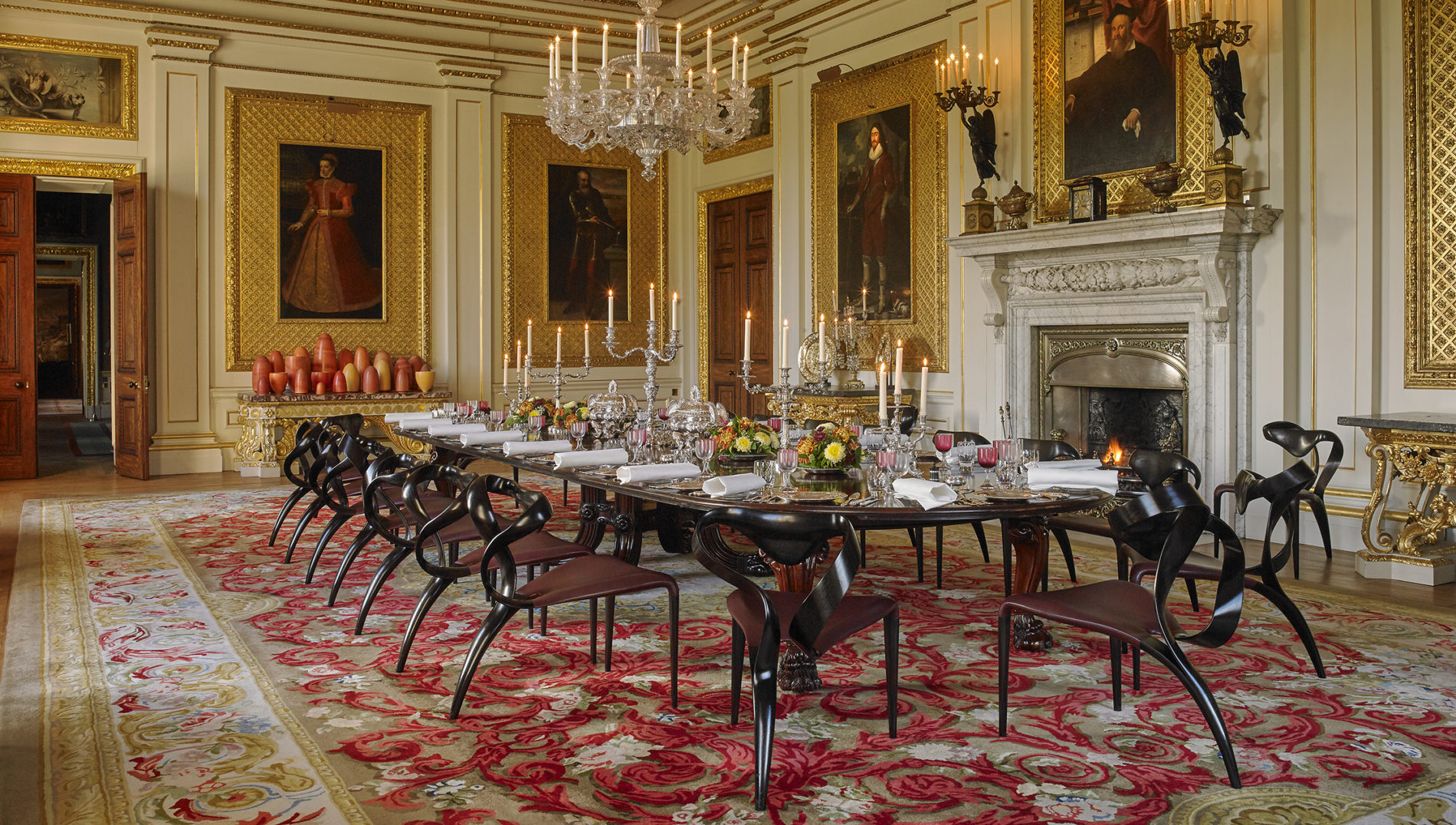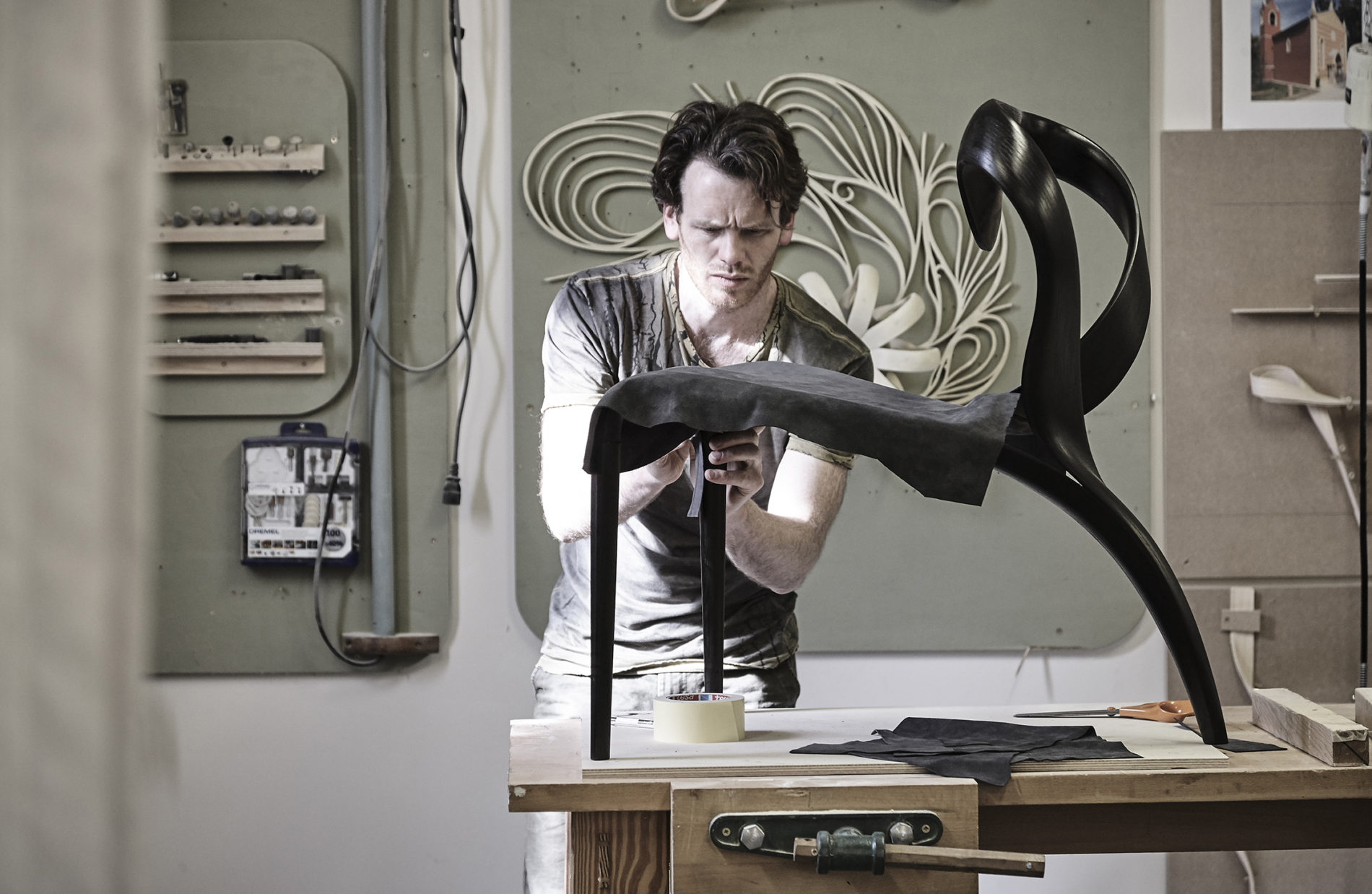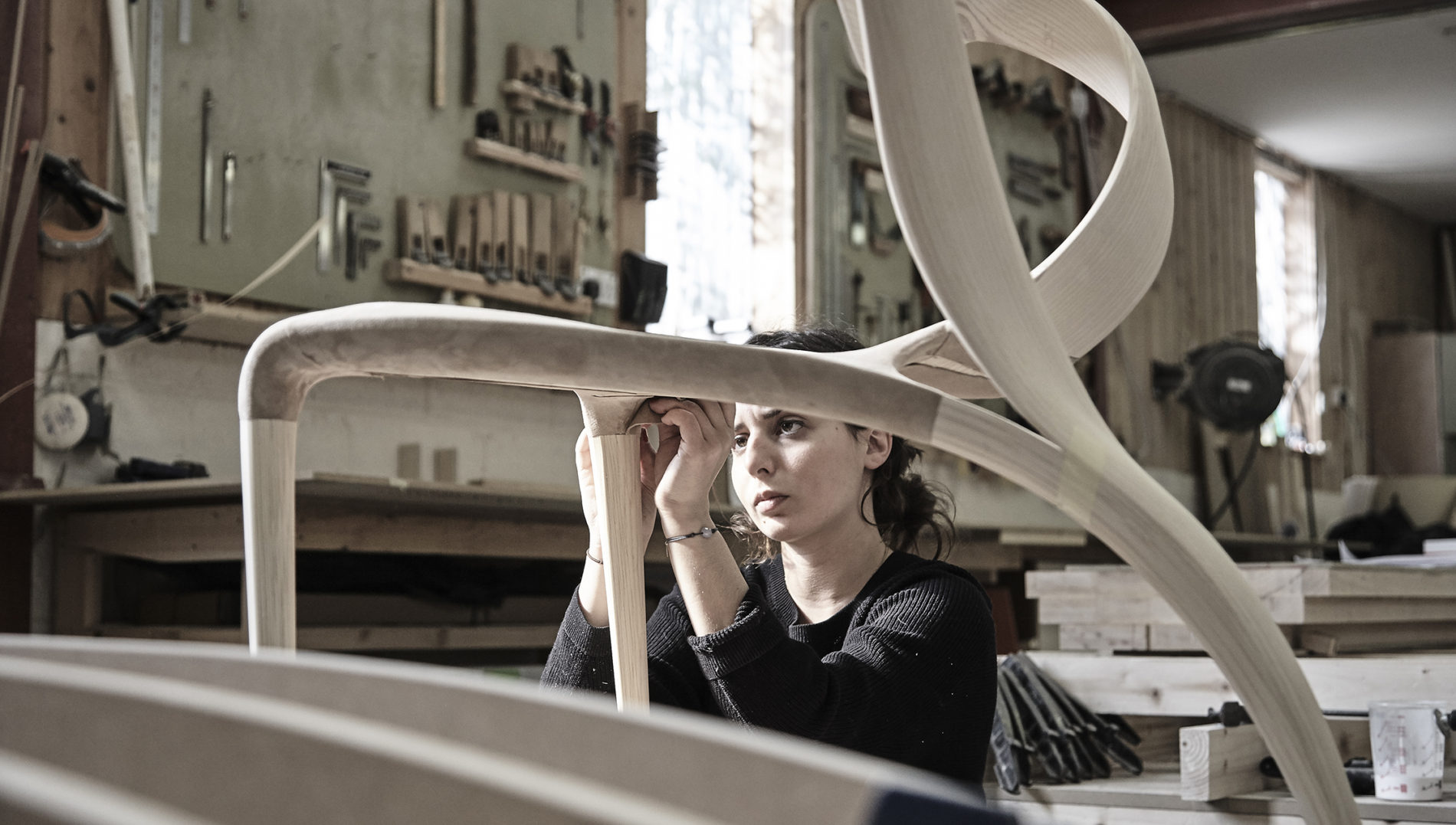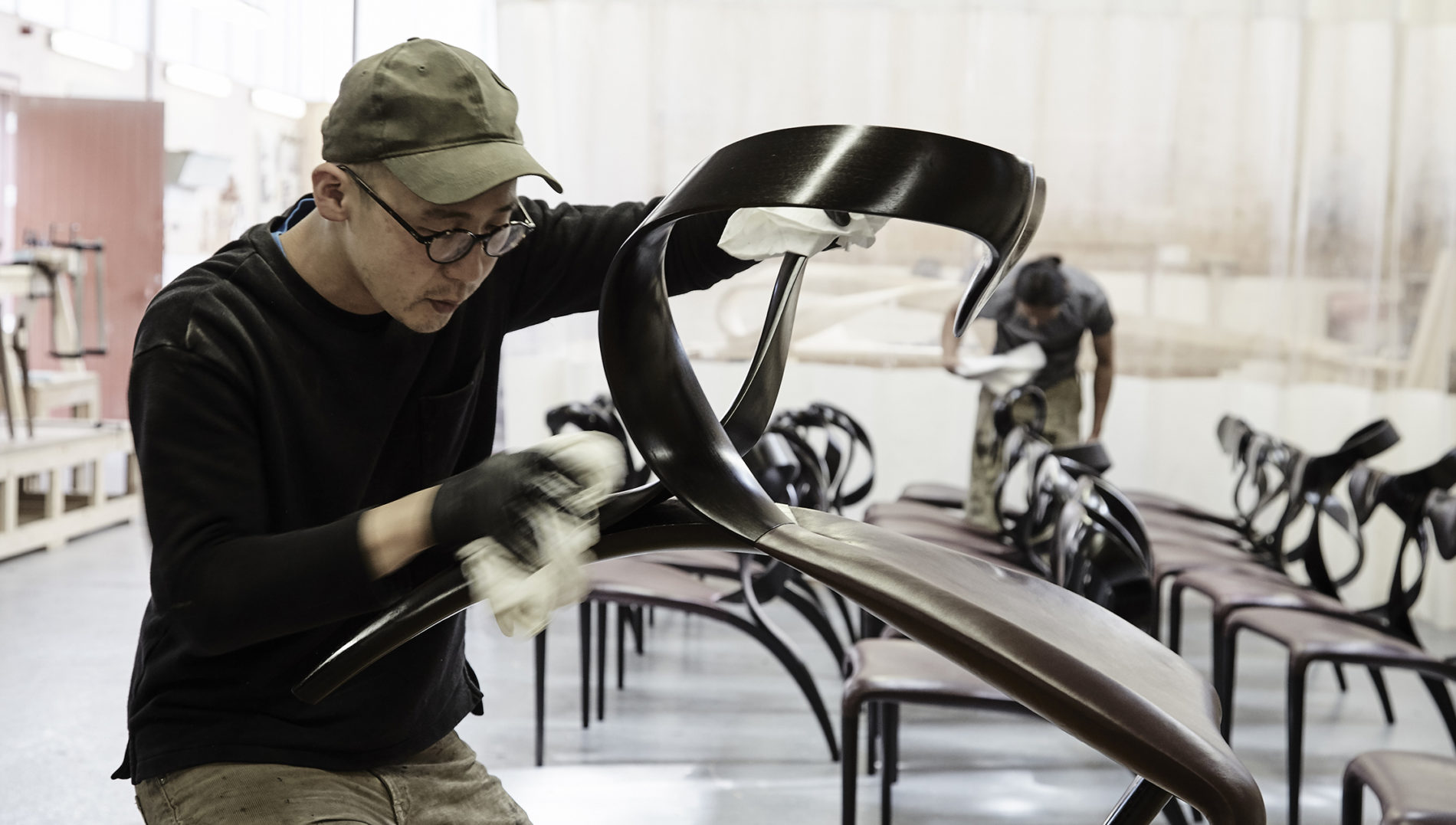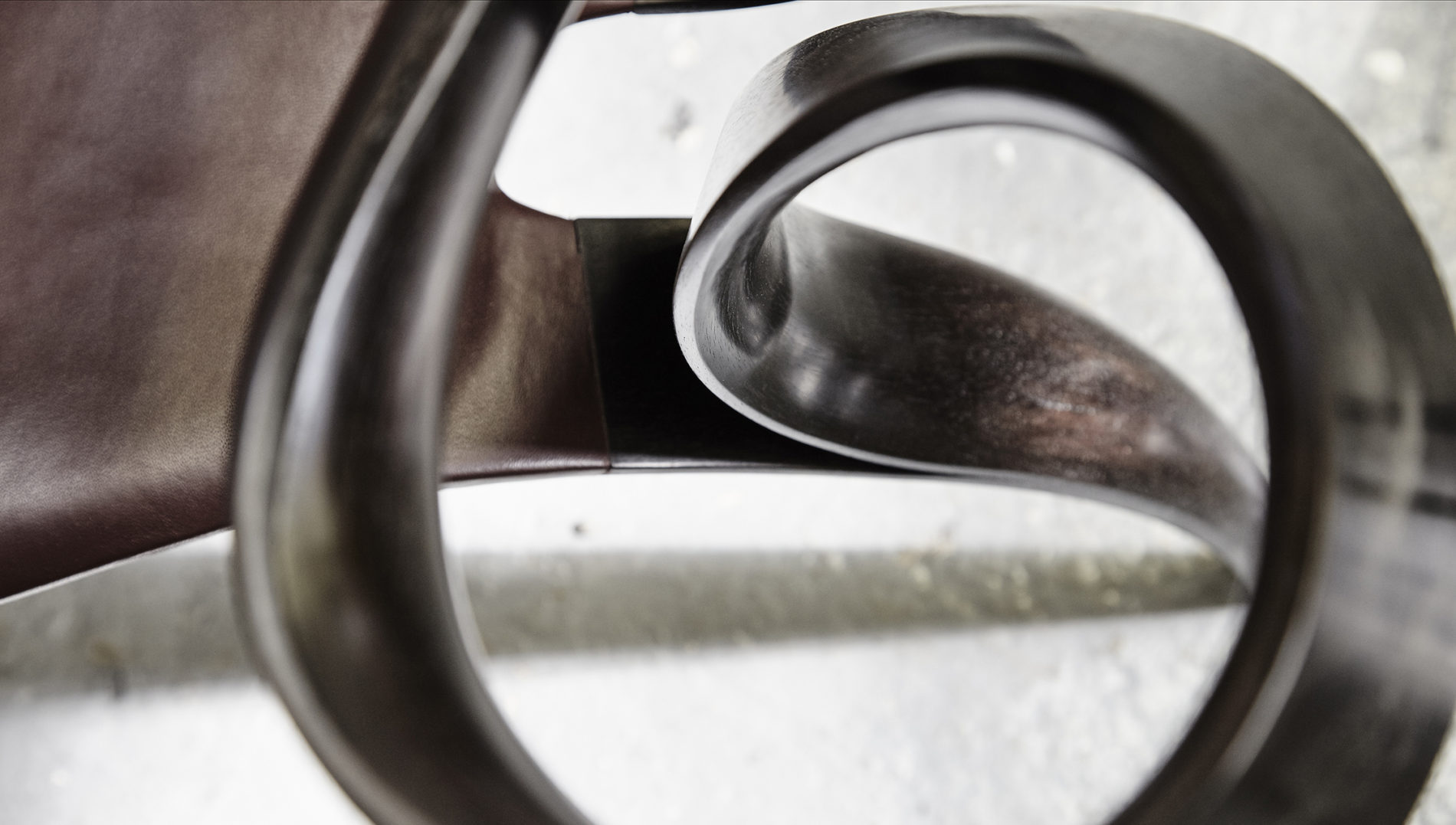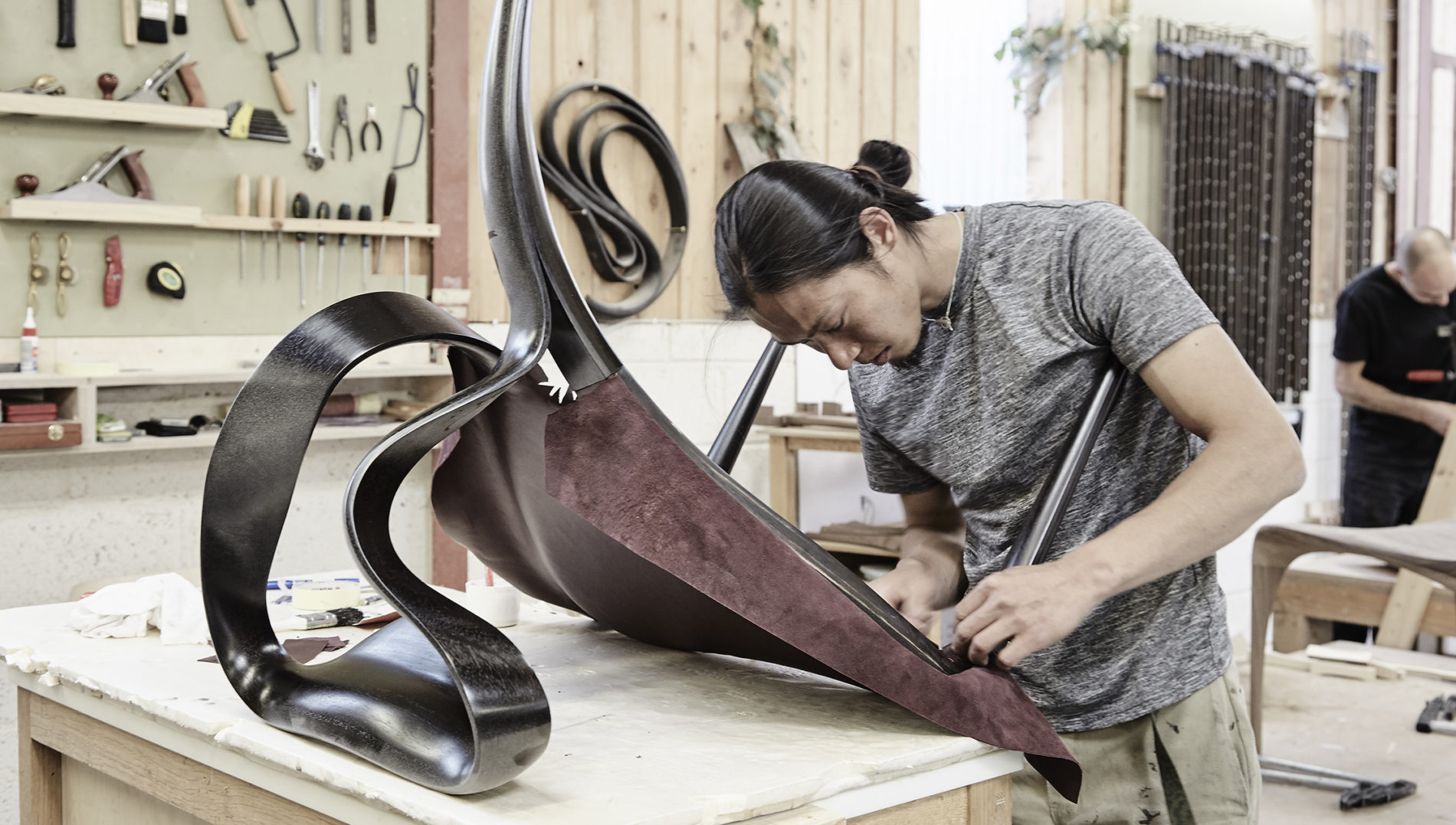Enignum Locus: Chatsworth Chairs I-XXIV
Twenty-four Enignum Locus Chairs, each one unique, were commissioned by the Duke and Duchess of Devonshire for the Great Dining Room of Chatsworth House, one of England’s finest stately homes.
The subtle variation in the silhouette of each chair creates ripples of movement around the dining table, evoking the characters and personalities off those who have gathered there through the centuries and enlivening the space with the echoes of encounters past, even when the room is still.
- Year designed: 2017
- Materials: Walnut, Leather
- Finish: Ebonised
- Dimensions: 740 x 550 x 785mm
- Edition of: Unique
About the Enignum series
In the Enignum series of work, I have stripped wood into thin layers, manipulating and reconstructing them into free form compositions. I then shape through these layers to reveal not only the honesty of the structure but the sculpted form which is a unique collaboration of man and material. The title derives from the Latin words Enigma ('mystery') and Lignum ('wood'), for me they sum up the series: the mystery of the composition lies in the material.
About the Enginum series
From the Latin words Enigma (mystery) and Lignum (wood), the Enignum series expresses the mystery of the form that lies within the material. Each Enignum composition is created by manipulating and reconstructing thin layers of ash or walnut, allowing the wood itself to reveal the form as each layer naturally follows the next, coming from the same tree and following the same path.

